1
/
of
2
Vickers Wellington
Vickers Wellington
Regular price
£25.00 GBP
Regular price
Sale price
£25.00 GBP
Taxes included.
Shipping calculated at checkout.
Quantity
Couldn't load pickup availability
High quality art print of a Vickers Wellington, a Second World War era British medium bomber. The Wellington was the most produced British bomber of the war, and the only bomber to remain in production throughout the entirety of the war; 11,462 were built, primarily for the Royal Air Force; the Fleet Air Arm and other Commonwealth Air Forces operated the Wellington in lower numbers.
The Vickers Wellington entered service in 1938, and was involved in the Second World War from the very start. Wellingtons took part in the RAF's first bombing run of the war, in the Battle of Heligoland Bight, and in the RAF's first bombing raid on Berlin. Wellingtons flew 47,409 operations for Bomber Command throughout the war. Though the Wellington was phased out in Europe from 1943 in favour of the Lancaster Bomber, it continued to be flown further afield, and was the RAF's first long-range bomber to operate in India.
A Vickers Wellington in 1943 was constructed in under 24 hours as part of a British propaganda campaign, less than half the time of the previous record holder. Construction took 23 hours and 50 minutes, and the aircraft was in the air just 24 hours and 48 minutes after the first parts of the airframe were set in place.
Two Vickers Wellingtons survive to this day, both of which are on display in the United Kingdom - one at Brooklands Museum, and the other at the Royal Air Force Museum in Hendon. This illustration depicts Wellington HZ950, a Wellington Mk X which was flown by No. 99 Squadron RAF over Arakan and Burma from 1942 to 1945.
This illustration by Rob Wisdom is a high-quality Giclée art print on cotton-rich fine art paper.
The Vickers Wellington entered service in 1938, and was involved in the Second World War from the very start. Wellingtons took part in the RAF's first bombing run of the war, in the Battle of Heligoland Bight, and in the RAF's first bombing raid on Berlin. Wellingtons flew 47,409 operations for Bomber Command throughout the war. Though the Wellington was phased out in Europe from 1943 in favour of the Lancaster Bomber, it continued to be flown further afield, and was the RAF's first long-range bomber to operate in India.
A Vickers Wellington in 1943 was constructed in under 24 hours as part of a British propaganda campaign, less than half the time of the previous record holder. Construction took 23 hours and 50 minutes, and the aircraft was in the air just 24 hours and 48 minutes after the first parts of the airframe were set in place.
Two Vickers Wellingtons survive to this day, both of which are on display in the United Kingdom - one at Brooklands Museum, and the other at the Royal Air Force Museum in Hendon. This illustration depicts Wellington HZ950, a Wellington Mk X which was flown by No. 99 Squadron RAF over Arakan and Burma from 1942 to 1945.
This illustration by Rob Wisdom is a high-quality Giclée art print on cotton-rich fine art paper.
Share
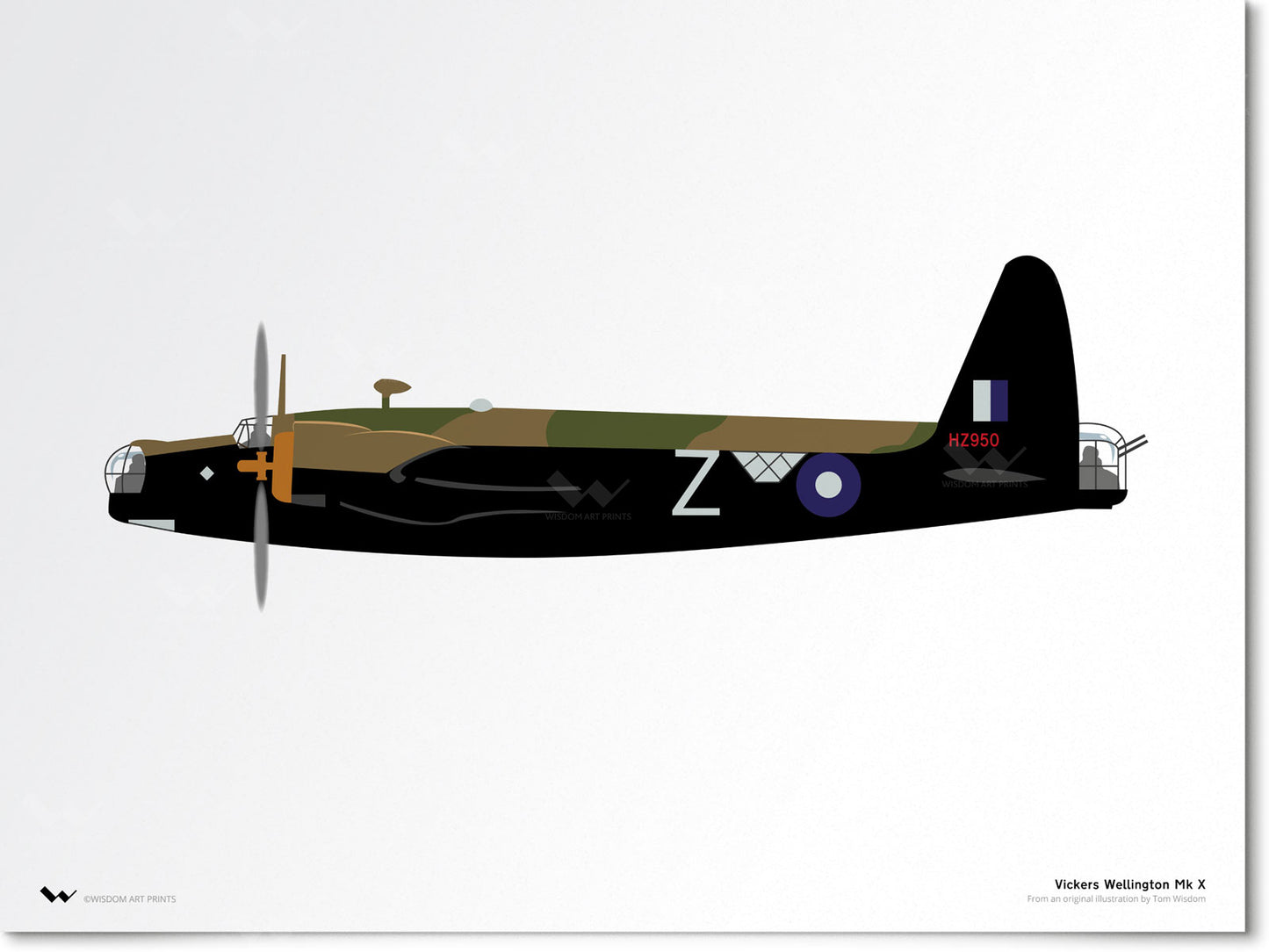
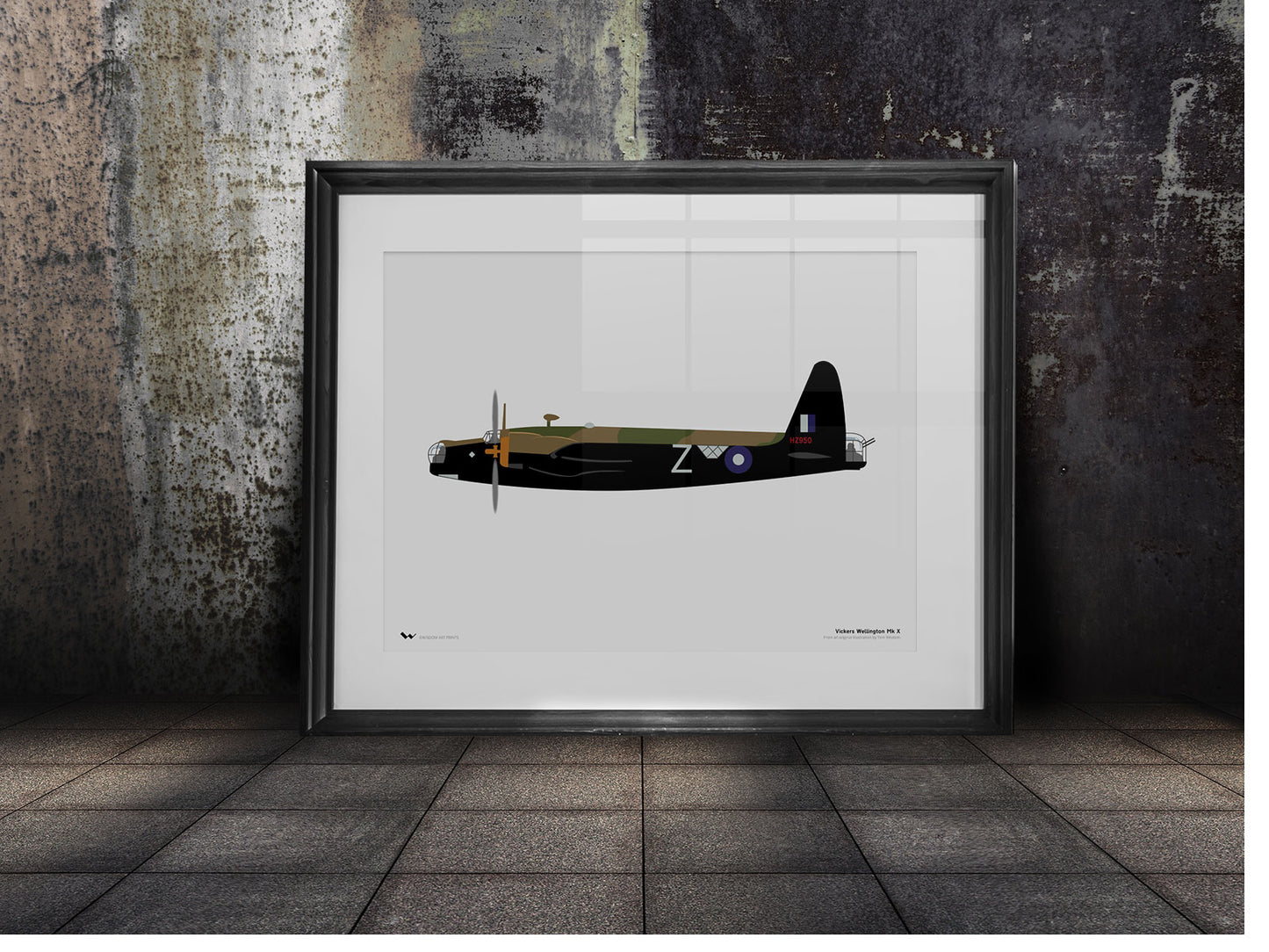
Explore more original aviation art prints
-
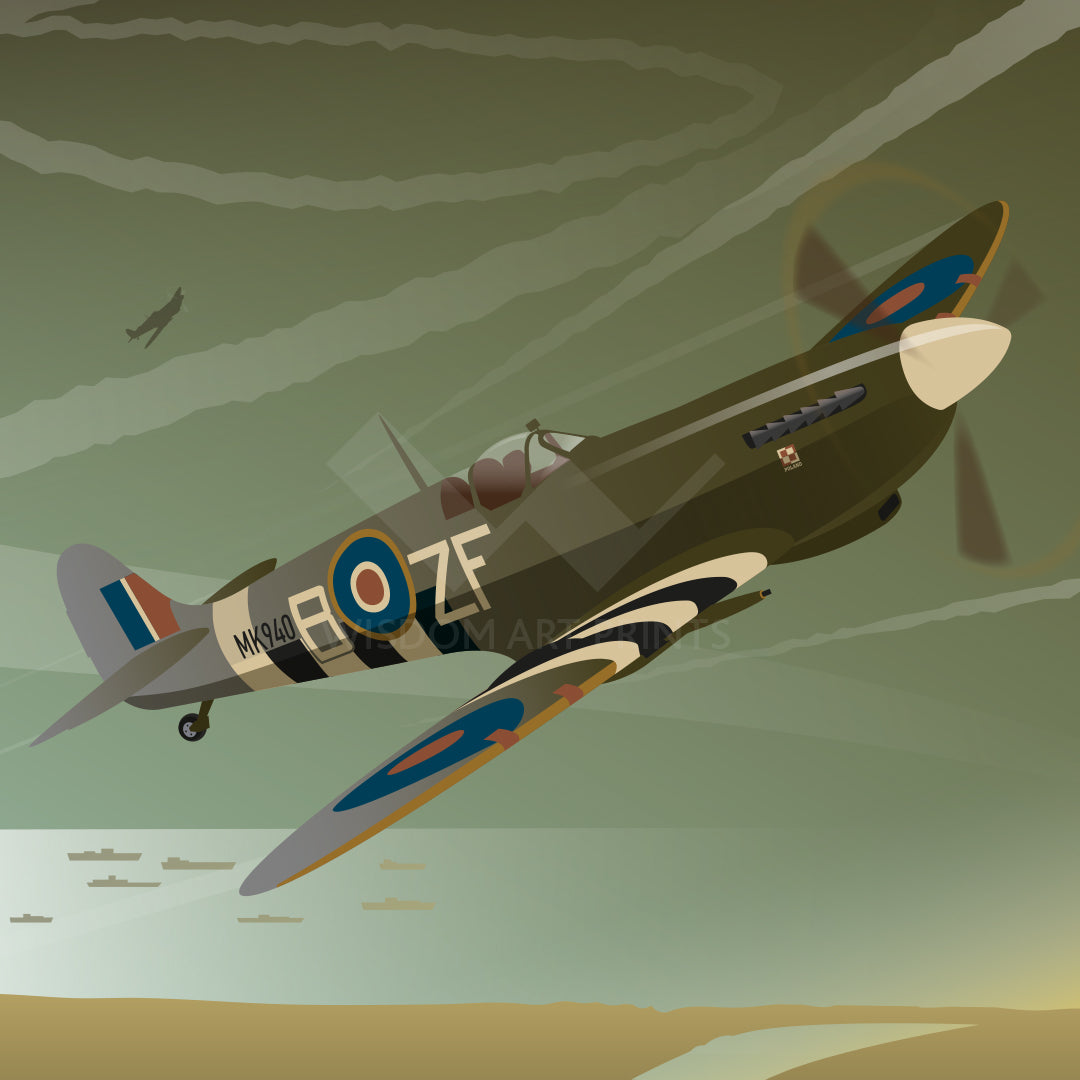
RAF Aircraft Art Prints
Our collection of Royal Air Force art prints, featuring a range of...
-
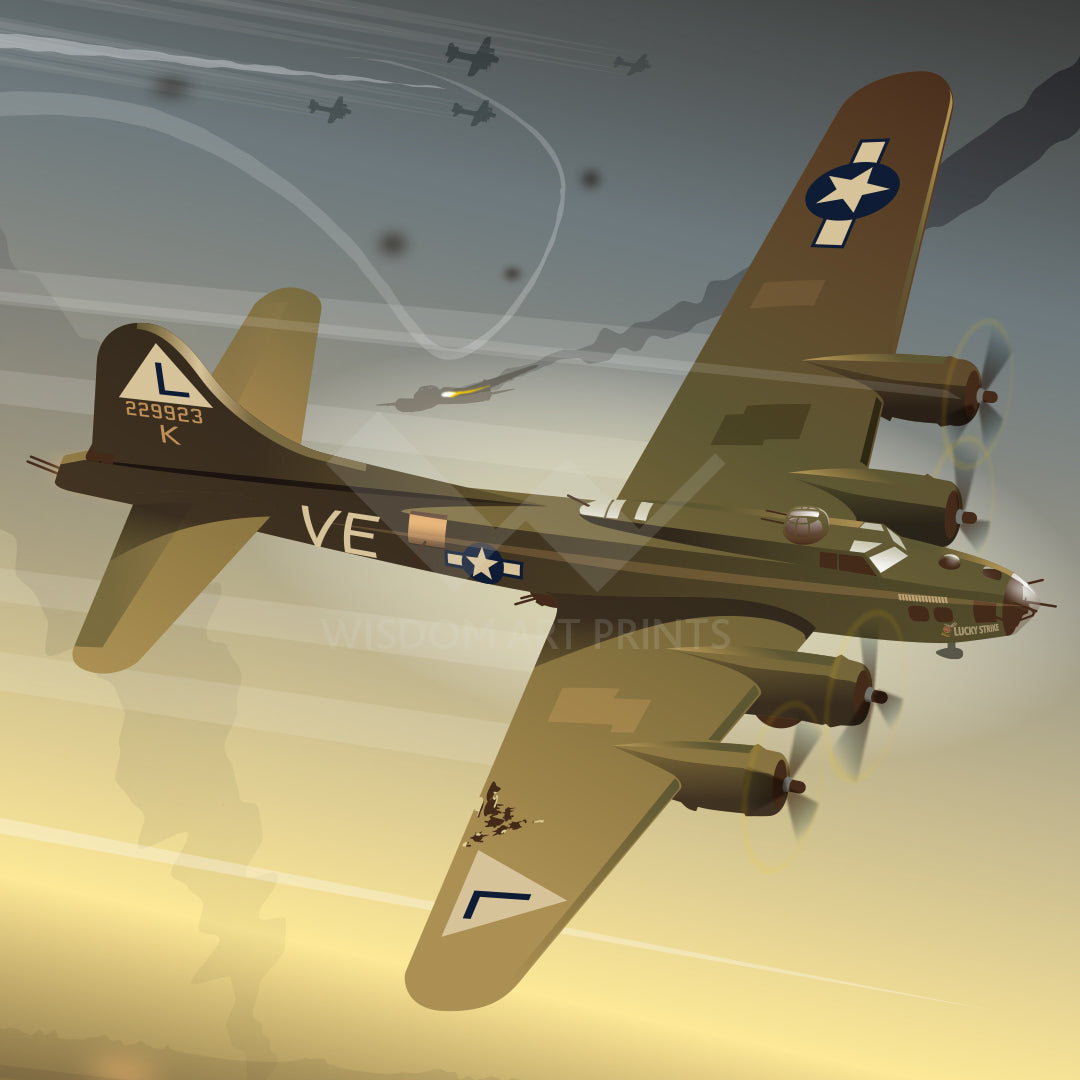
USAAF Aircraft Art Prints
Our collection of United States Army Air Forces art prints, featuring a...
-
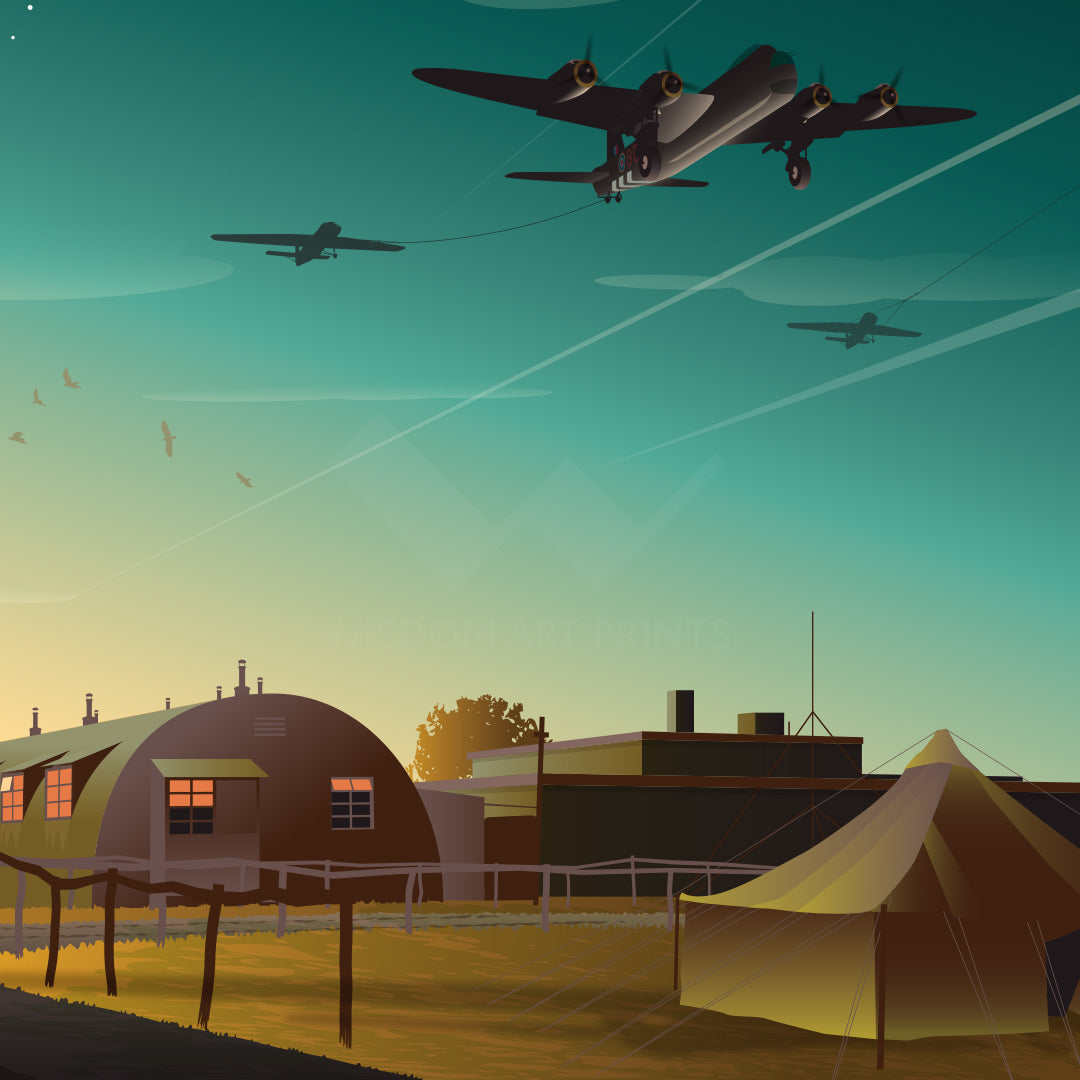
Historic Airfield Art Prints
Our collection of art prints depicting historic airfields of the First World...





